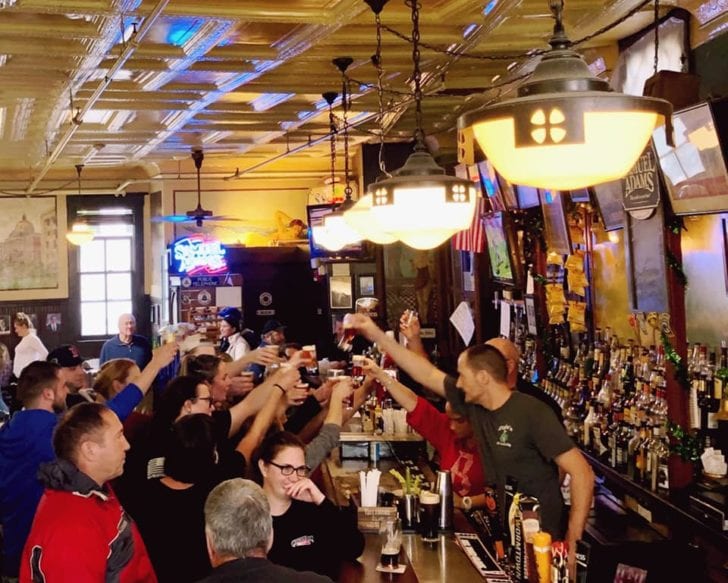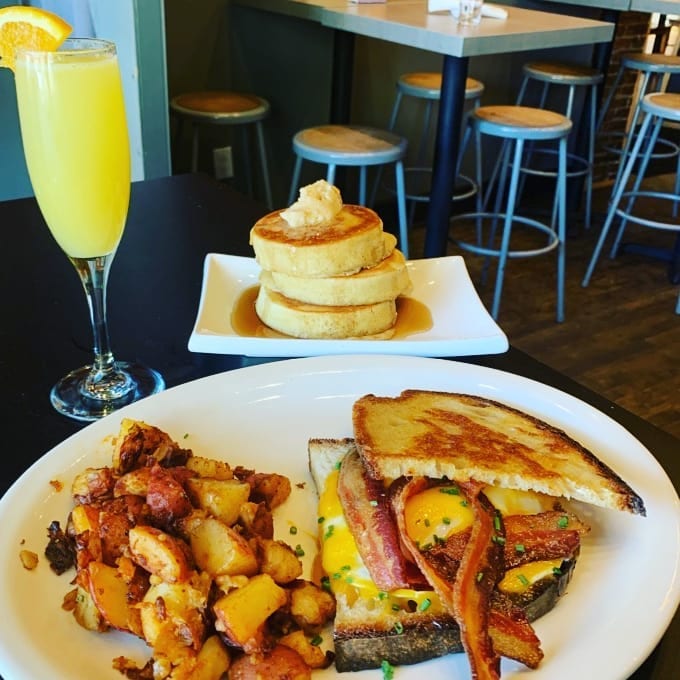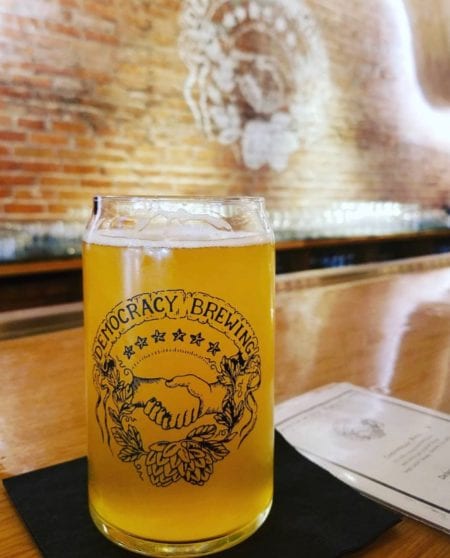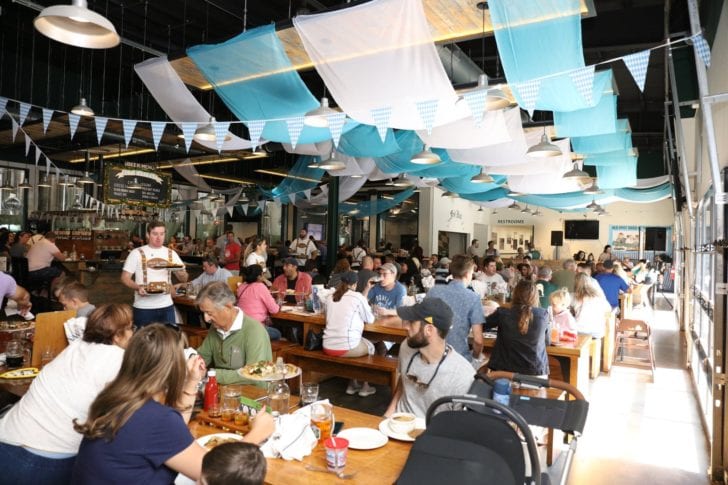
Last year was, to put it plainly, a pretty rough one for iconic local restaurants, with such longtime institutions as Doyle’s in Jamaica Plain, Durgin-Park at Faneuil Hall, No Name Restaurant, and The Hungry I in Beacon Hill all calling it a day over the past year, along with such slightly lesser-known (but still beloved) spots as Sami’s in the Longwood area, the Salem Diner in Salem, and Bella’s in Rockland shutting down as well after many years in business. And then there is Jacob Wirth, which is right up there with Doyle’s when it comes to landmark places, and which remains dark and empty and yes, rather sad-looking right in the heart of downtown Boston.
Signs of hope remain, however. Despite all the closings of what had been seen as some of the “untouchables,” such beloved restaurants and bars as Santarpio’s in East Boston, Caffe Vittoria and Regina’s in the North End, J.J. Foley’s in the South End, Pleasant Café in Roslindale, Newbridge Café in Chelsea, Town Spa in Stoughton, and yes, the Kowloon on Route 1 in Saugus continue to putter along with no (knock wood) signs of closing anytime soon.

But what if at least some of these places end up closing over the coming years? What—if any—dining and drinking spots will take up the slack and become the next batch of institutions for years to come? Or is the era of the well-established eateries drawing to a close? Some people think it’s the latter, but while no one knows for sure, it is definitely possible that the future might not be so bleak but will simply be different, with new (and in many cases fresh and exciting) types of spots becoming the next old guard and keeping the spirit of the local institutions alive.
In many cases, the longstanding restaurants and bars in and around Boston have tended to be neighborhood spots that locals could either walk to or use cars or public transportation for a very short ride, making them repeat spots because of the ease of getting there. Doyle’s was a great example of this, since it was surrounded by residential areas and near a subway line while also having its own parking lot. New dining and drinking spots are, of course still opening in neighborhoods, but many don’t have the draws that Doyle’s or now-closed local restaurants and bars like Louis in Quincy or the Green Briar in Brighton had—a real sense of community, prices kept relatively low so people could afford to go often, and a comfortable atmosphere where you didn’t feel like you were being pushed out or made to yell over each other because of the noise level.

Some newish places such as the Ashmont Grill in Dorchester, Snappy Pattys in West Medford, and the Haven in Jamaica Plain all fit the bill to an extent, even as their prices might be a bit higher and they lean toward the ever-growing category of casual-upscale spots. But it is easy to see a place such as the Ashmont Grill still humming along 25 years from now, keeping the tradition of well-established low-key neighborhood hangouts in the Boston area alive.
The next batch of beloved restaurants and bars may actually be hampered by such things as people cocooning with TV and food delivery, and residential areas simply losing their neighborhood feel (which ironically can be accelerated by longtime restaurants closing), so perhaps it will be something as simple as top-rated spots for food and drink surviving mainly because they are the few places that can still bring people into their places. In other words, such award-winning spots as Eastern Standard in Kenmore Square, Fox & the Knife in South Boston, Deuxave in the Back Bay, and Yvonne’s in downtown Boston could be future landmark restaurants no matter how expensive they may be (and some of them are indeed pricey) because of the overall experience that almost requires customers to come in rather than order from home.
Of course, some of the highest-rated places are much less expensive, including Ganko in Brookline, Roxy’s Grilled Cheese in Allston, Dakzen in Somerville’s Davis Square, and Saus near Faneuil Hall, so could places such as these end up being some of the mainstays many years from now? It’s certainly possible, though in these cases nearly everything would need to go right, especially in an area where rents continue to spiral out of control, making it tough to cover costs by selling poutine or noodle dishes. But as a wildly successful restaurant like Ganko proves, even lower-priced eateries can flourish even as fewer and fewer people actually go out to eat.
Because the nature of the restaurant industry seems to be changing across several different fronts almost simultaneously, it’s possible that the next group of places that could end up being well-established spots could be from a newer category or maybe one that doesn’t truly exist quite yet (think ax bars or escape room cafes, though it seems unlikely that either of these would spawn the next Jacob Wirth or Durgin-Park). One relatively new category is that of the multiuse brewery complexes that may include restaurants, game rooms, gift shops, taprooms, full bars, outdoor patios, live music, function space, and more.

Some of these places seem primed to be around for a long time and also become the “new” destination spots, such as the massive facility in Framingham that houses Jack’s Abby and Springdale, the new Trillium space in Boston’s red-hot Fort Point area, and maybe even Democracy Brewing in Downtown Crossing, which is basically a charming restaurant and bar that happens to be a brewery (and one that has some classic Boston touches inside that feel not all that different from Doyle’s or J.J. Foley’s). Sure, there is much talk these days of a beer bubble because there are simply too many breweries, but those that survive—and especially those that feel like places where folks can return to on a regular basis like Jack’s Abby and Springdale—could be among the classic Boston-area places of the future.
If you love tradition and the feel of old-Boston restaurants and bars, it’s easy to be discouraged these days because so many legendary places have shuttered while many more lesser-known spots (including countless neighborhood dive bars) have also disappeared. But many more revered places still do exist, and the hope is that some of the newer dining and drinking spots out there today will eventually heal the wounds that come from the closings of such places as Doyle’s and Durgin-Park.
It could be a struggle, and to be honest, nothing will likely be able to truly replace some of the landmarks that are gone, but who knows—maybe someday, future generations will be sitting in such places as Eastern Standard, Saus, Jack’s Abby, and Ganko and counting their lucky stars that they live in an area that is home to such iconic places.
Marc is the founder of @hiddenboston, a textbook editor, a hike leader for @AppMtnClub, and a food and travel writer and commenter for DigBoston, NBC/NECN, WBZ, WMFO and indie617.

